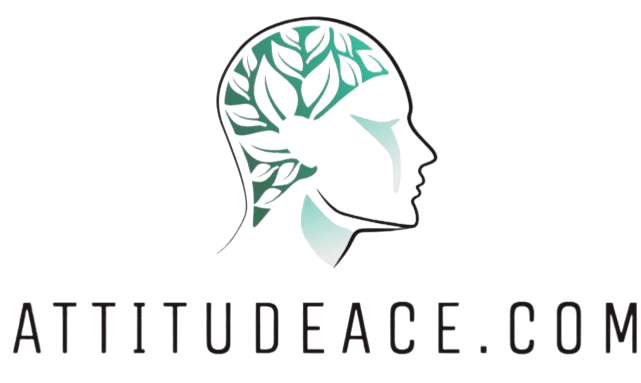How to Identify Your Strengths and Weaknesses?
Understanding your strengths and weaknesses is essential for both personal and professional growth. This exploration delves into what these concepts truly mean, why they hold significance, and how cultivating self-awareness can lead to meaningful transformation.
You will uncover effective methods for identifying your unique traits both the empowering aspects and the challenges you face.
Furthermore, you ll receive practical strategies designed to maximize your strengths while also addressing areas that need improvement. Embrace your complete self now to unlock your full potential and create a pathway to success.
Contents
Key Takeaways:

- Identify your strengths and weaknesses by self-reflection, assessment, or feedback from others.
- Understanding your strengths and weaknesses is important for self-awareness and personal growth.
- Utilize and improve your strengths while addressing and embracing your weaknesses for personal and professional success.
Understanding Strengths and Weaknesses
Understanding your strengths and weaknesses is essential for effective career planning, as it enables you to pinpoint your unique attributes and areas that could use some enhancement. By recognizing these qualities, you can utilize tools like Gallup s StrengthsFinder 2.0 or the Myers-Briggs Type Indicator for a comprehensive assessment of your strengths.
Seeking feedback from others can reveal patterns in your work that might not be obvious at first glance. This blend of self-reflection and external input can spark real personal growth and propel your career toward success, ultimately crafting a more fulfilling career that aligns with your strengths and aspirations.
Defining Strengths and Weaknesses
Defining your strengths and weaknesses is essential for personal development. Your strengths are the inherent skills or attributes that pave the way for your success, while weaknesses are the areas that need a bit more attention or improvement.
This understanding helps you carve out a unique path to success! It also enhances your interactions in professional settings. For instance, a strengths assessment might reveal attributes like effective communication, adaptability, or problem-solving skills, each of which can significantly impact team dynamics and project outcomes.
On the flip side, recognizing weaknesses such as a tendency to procrastinate or struggles with public speaking enables you to seek targeted training or mentorship. Frameworks like SWOT analysis a tool that helps you identify strengths, weaknesses, opportunities, and threats can further assist you in evaluating these personal attributes, allowing you to leverage your strengths while addressing weaknesses.
Ultimately, this fosters a balanced approach to both personal and professional development.
Why Identifying Strengths and Weaknesses is Important
Identifying your strengths and weaknesses is crucial in the career planning process. It provides valuable insights into areas you can leverage for growth and development, allowing you to concentrate on the strengths that are truly worth cultivating.
This self-assessment serves as an energy audit, helping you evaluate how your skills align with your career aspirations and job fit. Ultimately, this focused approach leads to enhanced success in your professional journey.
Benefits of Self-Awareness

Self-awareness offers a wealth of advantages, including enhanced personal growth and a clearer understanding of your strengths, ultimately elevating your career capital.
By deepening your insight into your emotions, motivations, and behaviors, self-awareness enables you to navigate intricate social dynamics and make well-informed decisions. In your personal life, this clarity can lead to healthier relationships and greater satisfaction, while in a professional context, it plays a crucial role in effective leadership.
When you recognize your strengths and weaknesses, you position yourself to pursue roles that truly align with your skills, maximizing your contributions and seizing opportunities for advancement. This cultivation of self-awareness not only boosts your confidence but also enhances your ability to build networks and navigate professional landscapes, further solidifying your career capital.
Methods for Identifying Strengths and Weaknesses
You can identify your strengths and weaknesses through a variety of methods, including self-reflection and assessment. These approaches encourage you to analyze your personal strengths while also considering feedback from others.
This combination can unveil patterns in your work that enhance your understanding of your strengths.
Self-Reflection and Assessment
Self-reflection is an essential tool for identifying your personal strengths. It enables you to conduct a thorough assessment that reveals your unique attributes.
By engaging in self-reflection, you can uncover valuable insights into your skills, preferences, and areas of resilience. Techniques such as journaling can track your thoughts and feelings over time, offering a rich narrative that highlights recurring themes or strengths.
Utilizing self-assessment tools like the CliftonStrengths Evaluation or the VIA Character Strengths Survey provides structured ways to pinpoint where you excel. These resources help you gain a clearer understanding of your inherent capabilities and assist you in setting achievable goals, laying the groundwork for personal and professional growth.
Feedback from Others
Getting feedback from others is crucial for your strengths assessment process. It can reveal patterns in your work that may not be clear through self-reflection alone.
This external perspective offers you valuable insights into your performance, helping you uncover your abilities and areas that could use improvement.
To effectively solicit constructive feedback, consider adopting a structured approach. Set up regular check-ins or engage colleagues in informal conversations about their perceptions. For instance, as a project manager, invite team members to share their thoughts on your leadership style, enabling them to provide honest feedback.
By encouraging open dialogue, the insights you gather can reinforce your existing strengths and illuminate any blind spots. These insights will power your personal and professional growth!
How to Use Your Strengths and Improve Your Weaknesses

Effectively harnessing your strengths while addressing your weaknesses is crucial for achieving career success. This approach allows you to maximize your strengths in a way that aligns with your job and encourages you to engage in focused skills development.
Maximizing Strengths
Maximizing your strengths means leveraging your unique talents to enhance your career success. When you acknowledge your distinct abilities and seek to integrate them into various aspects of your professional life, you cultivate a more impactful presence.
For example, if you have strong communication skills combined with a talent for project management, you can effectively lead teams and foster collaboration. This synergy enhances your confidence and inspires those around you to excel.
By regularly assessing your strengths, you can fine-tune your strategies to align with evolving goals and environments. This proactive approach paves the way for significant achievements and rewarding relationships, both personally and professionally.
Addressing Weaknesses
Addressing your weaknesses is essential for personal growth and begins with pinpointing areas to improve.
Once you ve identified these areas, you can employ effective methods to tackle them. Consider enrolling in targeted workshops, seeking out mentorship (guidance from someone experienced), or utilizing online resources to facilitate your journey.
Crafting a structured plan with measurable goals encourages accountability and fosters meaningful progress. Embracing a proactive mindset is crucial as it allows you to view challenges as opportunities for growth.
Incorporating regular self-assessment and feedback loops can enhance your ability to adapt and refine your strategies. Ultimately, this approach leads to improved skills and a heightened sense of confidence and fulfillment.
Conclusion
Understanding and leveraging your strengths while addressing weaknesses is a powerful journey. Start journaling today to track your thoughts and take actionable steps toward growth!
Embracing and Utilizing Your Strengths and Weaknesses
Embracing and utilizing both your strengths and weaknesses is essential for personal growth. It paves the way for a more fulfilling career.
By acknowledging these facets of your professional identity, you can navigate the complexities of your work environment with greater ease. For example, recognizing your strong analytical skills might enable you to tackle challenging projects.
Awareness of a weakness in public speaking could motivate you to pursue training opportunities. This balanced view builds resilience and encourages continuous improvement.
Over time, adopting this approach leads to deeper self-awareness, which means understanding yourself better. This allows you to align your career path with your values and passions, ultimately enhancing your job satisfaction and effectiveness in your role.
Frequently Asked Questions

What are strengths and weaknesses?
Strengths are personal qualities or attributes that you excel in. Weaknesses are areas where you struggle or have room for improvement.
Why is it important to identify your strengths and weaknesses?
Knowing your strengths helps you make the most of your talents and skills. Being aware of your weaknesses allows you to work on improving them and becoming a well-rounded individual.
How can I identify my strengths and weaknesses?
A good way to identify your strengths and weaknesses is to reflect on experiences where you excelled and areas where you struggled. You can also:
- Ask for feedback from others
- Take personality or skills assessments
- Seek professional guidance
What are some examples of strengths and weaknesses?
Examples of strengths include:
- Effective communication skills
- Creativity
- Time management
Examples of weaknesses could be:
- Difficulty with public speaking
- Lack of organization
- Being overly critical of oneself
Can strengths and weaknesses change over time?
Yes, strengths and weaknesses can change as you gain new experiences, learn new skills, and face different challenges. You must regularly reassess to keep growing!
How can I use my strengths and weaknesses to my advantage?
By being aware of your strengths, you can focus on using them to your advantage in various situations. For instance, if you have good leadership skills, you can take on leadership roles.
Similarly, recognizing your weaknesses allows you to work on improving them and minimizing their impact on your personal and professional life.
Start identifying your strengths and weaknesses today!






